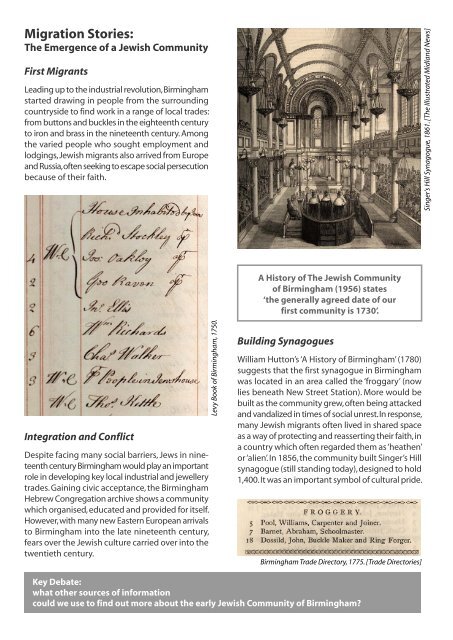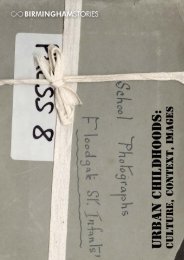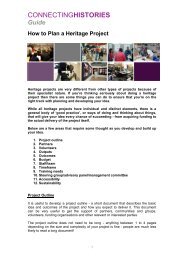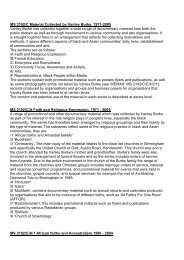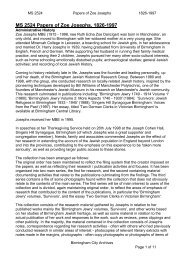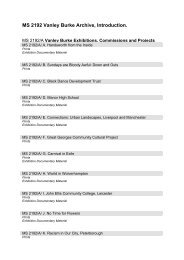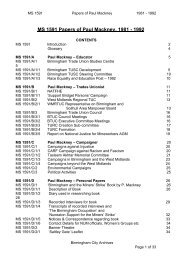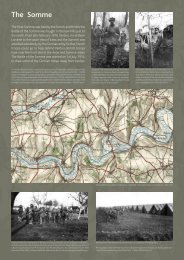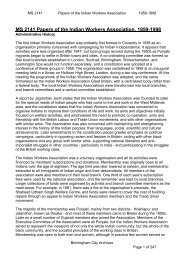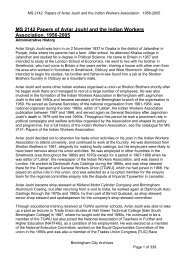Migration Stories - Connecting Histories
Migration Stories - Connecting Histories
Migration Stories - Connecting Histories
You also want an ePaper? Increase the reach of your titles
YUMPU automatically turns print PDFs into web optimized ePapers that Google loves.
<strong>Migration</strong> <strong>Stories</strong>:<br />
The Emergence of a Jewish Community<br />
First Migrants<br />
Leading up to the industrial revolution, Birmingham<br />
started drawing in people from the surrounding<br />
countryside to find work in a range of local trades:<br />
from buttons and buckles in the eighteenth century<br />
to iron and brass in the nineteenth century. Among<br />
the varied people who sought employment and<br />
lodgings, Jewish migrants also arrived from Europe<br />
and Russia, often seeking to escape social persecution<br />
because of their faith.<br />
Singer’s Hill Synagogue, 1861. [The Illustrated Midland News]<br />
A History of The Jewish Community<br />
of Birmingham (1956) states<br />
‘the generally agreed date of our<br />
first community is 1730’.<br />
Integration and Conflict<br />
Despite facing many social barriers, Jews in nineteenth<br />
century Birmingham would play an important<br />
role in developing key local industrial and jewellery<br />
trades. Gaining civic acceptance, the Birmingham<br />
Hebrew Congregation archive shows a community<br />
which organised, educated and provided for itself.<br />
However, with many new Eastern European arrivals<br />
to Birmingham into the late nineteenth century,<br />
fears over the Jewish culture carried over into the<br />
twentieth century.<br />
Levy Book of Birmingham, 1750.<br />
Building Synagogues<br />
William Hutton’s ‘A History of Birmingham’ (1780)<br />
suggests that the first synagogue in Birmingham<br />
was located in an area called the ‘froggary’ (now<br />
lies beneath New Street Station). More would be<br />
built as the community grew, often being attacked<br />
and vandalized in times of social unrest. In response,<br />
many Jewish migrants often lived in shared space<br />
as a way of protecting and reasserting their faith, in<br />
a country which often regarded them as ‘heathen’<br />
or ‘alien’. In 1856, the community built Singer’s Hill<br />
synagogue (still standing today), designed to hold<br />
1,400. It was an important symbol of cultural pride.<br />
Birmingham Trade Directory, 1775. [Trade Directories]<br />
Key Debate:<br />
what other sources of information<br />
could we use to find out more about the early Jewish Community of Birmingham


